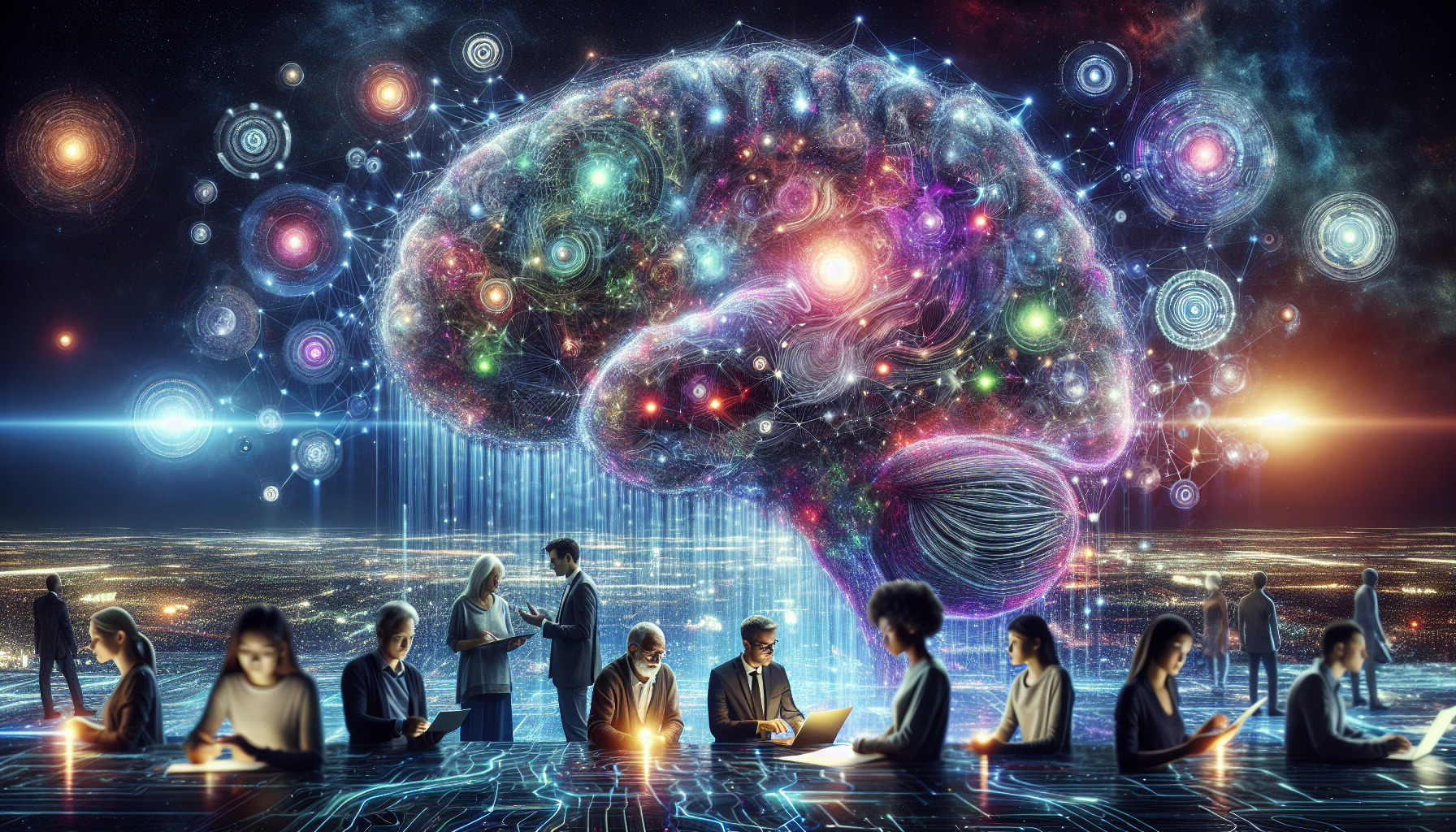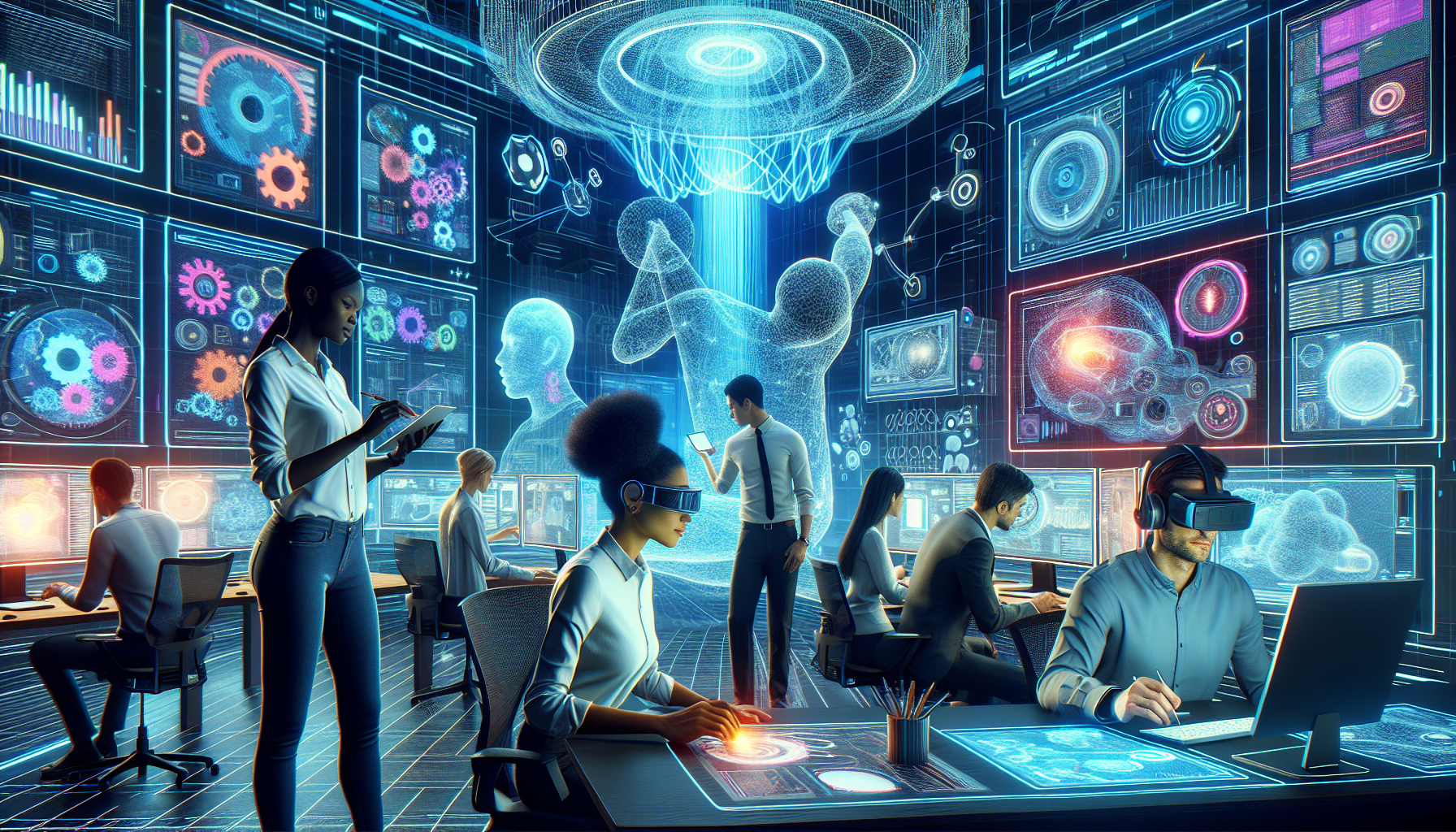Unlocking AI Potential: How LLMs and DSO Transform Reasoning & 3D Generation
Exploring advanced solutions and research in software development and IT services
Detailed Research & Insights
Continue reading for in-depth analysis and technical details

In a world where creativity and technology intertwine more than ever, the potential of Artificial Intelligence (AI) is both exhilarating and daunting. Have you ever wondered how Large Language Models (LLMs) can revolutionize your approach to reasoning or how Dynamic Scene Optimization (DSO) can elevate 3D generation beyond imagination? If you're grappling with harnessing these powerful tools for innovative design or problem-solving, you're not alone. Many creatives and professionals alike find themselves at a crossroads, eager to unlock the transformative capabilities of AI but unsure where to begin. This blog post serves as your essential guide, illuminating the intricate relationship between LLMs and DSO while showcasing their combined prowess in enhancing creativity across various domains. From understanding the foundational elements that drive AI reasoning to exploring real-world applications that push boundaries, we’ll delve into practical insights tailored for beginners ready to embark on this technological journey. So, are you prepared to unleash your creative potential through cutting-edge AI tools? Join us as we explore what lies ahead in this thrilling landscape!
Understanding LLMs: The Backbone of AI Reasoning
Large Language Models (LLMs) serve as the foundation for advanced AI reasoning capabilities, particularly in tasks requiring information acquisition. The QuestBench framework evaluates LLM performance by presenting underspecified reasoning tasks across various domains, such as Logic-Q and Planning-Q. This benchmark highlights the critical role that effective questioning plays in solving problems where not all information is available. By formalizing underspecification within Constraint Satisfaction Problems (CSPs), researchers emphasize the importance of 1-sufficient CSPs to enhance LLM efficacy. Moreover, studies indicate a strong correlation between an LLM's ability to reason and its capacity to ask pertinent questions, underlining how crucial it is for these models to gather necessary data effectively.
Challenges Faced by LLMs
Despite their impressive capabilities in fully specified scenarios, LLMs often struggle with ambiguity and underspecification when tasked with generating appropriate inquiries. These challenges can hinder their overall effectiveness in real-world applications where user requests may lack clarity or completeness. As such, enhancing task-oriented dialogue benchmarks becomes essential for improving user interactions with AI systems. Addressing these limitations will pave the way for more robust applications across industries ranging from customer service to complex decision-making processes involving nuanced reasoning tasks.

The Role of DSO in 3D Generation
Direct Simulation Optimization (DSO) plays a pivotal role in enhancing the physical soundness of 3D object generation. By utilizing feedback from physics simulators, DSO fine-tunes generative models to ensure stability under gravitational forces without requiring test-time optimization. This innovative approach introduces two key objectives: Direct Preference Optimization (DPO) and Direct Reward Optimization (DRO), which align diffusion models effectively while avoiding pairwise preferences. Experiments conducted using the Objaverse dataset demonstrate that DSO significantly outperforms traditional methods, producing stable and geometrically faithful 3D objects.
Key Advantages of DSO
The advantages of employing DSO include improved physical stability and reduced computational overhead during model training. By leveraging techniques such as AdamW and LoRA for fine-tuning, researchers can achieve high-quality outputs even with smaller datasets or synthetic data inputs. Moreover, the trade-off between geometric fidelity and physical soundness is addressed through advanced modeling strategies that enhance both attributes simultaneously. As industries increasingly rely on realistic computer-generated imagery, understanding how to optimize these parameters becomes essential for creating visually compelling yet physically accurate assets in various applications like gaming, virtual reality, and simulation environments.

Combining LLMs and DSO for Enhanced Creativity
The integration of Large Language Models (LLMs) with Direct Simulation Optimization (DSO) presents a transformative approach to enhancing creativity in AI applications. By leveraging the strengths of LLMs in generating contextually relevant queries, we can improve information acquisition during reasoning tasks. QuestBench highlights how LLMs struggle with underspecified problems, yet when combined with DSO's robust framework for 3D object generation, these models can create more stable and innovative outputs. The synergy between asking the right questions—facilitated by LLMs—and optimizing physical attributes through DSO enables a new level of creative exploration across various domains.
Enhancing Information Acquisition
Combining the questioning capabilities of LLMs with DSO’s focus on stability allows for better-informed decision-making processes in generative design. This collaboration not only improves model performance but also fosters an environment where complex ideas can be visualized accurately as 3D objects. As such, this hybrid approach opens avenues for advancements in fields like game design, architecture, and virtual reality experiences where both narrative depth and physical realism are paramount.
By harnessing multi-step reasoning from ReaRec alongside enhanced user representations through implicit feedback mechanisms provided by DSO, creators can achieve unprecedented levels of innovation while maintaining practical constraints inherent to real-world applications.
Real-World Applications of AI in Reasoning and 3D Design
AI's integration into reasoning tasks and 3D design is transforming various industries. In reasoning, Large Language Models (LLMs) like those evaluated with QuestBench demonstrate their capability to ask pertinent questions for information acquisition, enhancing decision-making processes across sectors such as healthcare, finance, and customer service. By addressing underspecified scenarios through effective questioning strategies, LLMs can provide tailored solutions that significantly improve user experience.
Enhancing 3D Design with DSO
In the realm of 3D design, Direct Simulation Optimization (DSO) enhances the physical soundness of generated objects by utilizing feedback from physics simulations. This method allows designers to create stable structures without extensive computational overhead. Industries such as gaming and virtual reality benefit from this technology by producing realistic assets that maintain both geometric fidelity and stability under gravity. The combination of LLMs' reasoning capabilities with DSO's optimization techniques paves the way for innovative applications in architecture, product design, and entertainment—where creative ideation meets practical execution seamlessly.
By leveraging these advanced methodologies together, businesses can streamline workflows while fostering creativity in developing complex designs or solving intricate problems efficiently.# Future Trends: What’s Next for AI, LLMs, and DSO?
The future of AI, particularly in the realms of Large Language Models (LLMs) and Direct Simulation Optimization (DSO), is poised for significant advancements. As highlighted by recent studies like "QuestBench," LLMs are evolving to better understand underspecified reasoning tasks through improved question-asking capabilities. This evolution emphasizes the necessity for models that can navigate ambiguity effectively while acquiring critical information. Simultaneously, DSO is revolutionizing 3D object generation by enhancing physical stability without incurring computational overhead. By integrating feedback from physics simulations into generative processes, DSO ensures that generated objects maintain both physical soundness and geometric fidelity.
The Intersection of Reasoning and Generation
As these technologies converge, we anticipate a new wave of applications where LLMs enhance user interactions in design environments powered by DSO frameworks. For instance, task-oriented dialogue systems could leverage advanced questioning techniques to guide users in creating stable 3D assets tailored to specific needs or preferences. Furthermore, as researchers refine methodologies around multi-step reasoning within recommendation systems using frameworks like ReaRec, we may see more personalized experiences emerge across various industries—ranging from gaming to virtual reality—to optimize user engagement through intelligent recommendations based on nuanced understanding derived from LLMs’ capabilities.
By focusing on these intertwined developments in AI technology—particularly how they inform one another—we can expect innovative solutions that not only improve efficiency but also expand creative possibilities across diverse fields.
Getting Started with AI Tools for Beginners
To effectively engage with AI tools, beginners should first familiarize themselves with the foundational concepts of Large Language Models (LLMs) and their capabilities. Understanding how LLMs like GPT-3 function is crucial; they utilize vast datasets to generate human-like text based on input prompts. QuestBench provides a framework for evaluating these models by assessing their ability to ask pertinent questions in reasoning tasks, highlighting the importance of information acquisition in scenarios where data may be incomplete or ambiguous.
Key Concepts to Explore
-
Understanding Underspecification: Grasping underspecified reasoning tasks can help users recognize challenges faced by LLMs when generating responses.
-
Practical Applications: Experimenting with various AI tools allows beginners to explore real-world applications such as chatbots, content generation, and recommendation systems that leverage multi-step reasoning frameworks like ReaRec.
By diving into these areas, newcomers can develop a robust understanding of how AI tools operate and begin utilizing them effectively across different domains. In conclusion, the integration of Large Language Models (LLMs) and Dynamic Scene Optimization (DSO) is revolutionizing both reasoning capabilities and 3D generation in artificial intelligence. Understanding LLMs as foundational elements for AI reasoning allows us to appreciate their role in processing language and generating insights that drive creativity. Meanwhile, DSO enhances the efficiency and realism of 3D design, making it an invaluable tool for creators across various industries. The synergy between these technologies opens up new avenues for innovation, enabling real-world applications that range from gaming to architecture. As we look toward future trends, it's clear that advancements in AI will continue to reshape our creative landscapes. For those eager to dive into this exciting field, starting with accessible AI tools can pave the way for harnessing these transformative technologies effectively. Embracing this knowledge not only equips individuals with essential skills but also fosters a deeper understanding of how AI can enhance human creativity and problem-solving abilities moving forward.
FAQs
1. What are LLMs and how do they contribute to AI reasoning?
LLMs, or Large Language Models, are advanced AI systems designed to understand and generate human-like text based on vast amounts of data. They contribute to AI reasoning by enabling machines to process language contextually, draw inferences, and provide coherent responses that mimic human thought processes.
2. What is DSO and what role does it play in 3D generation?
DSO stands for Dynamic Scene Optimization, a technique used in computer graphics that enhances the efficiency of rendering complex scenes in three dimensions. It plays a crucial role in 3D generation by optimizing resource use while maintaining high-quality visuals, allowing for more realistic simulations and designs.
3. How can combining LLMs with DSO enhance creativity?
Combining LLMs with DSO allows for innovative approaches where textual descriptions generated by LLMs can be transformed into detailed visual representations through DSO techniques. This synergy enables creators to explore new ideas rapidly and produce unique designs that might not have been conceived through traditional methods alone.
4. What are some real-world applications of AI using LLMs and DSO?
Real-world applications include virtual reality environments where users interact with dynamically generated content based on natural language inputs; architectural design tools that create models from descriptive prompts; video game development where narratives evolve alongside player actions; and automated content creation across various media formats.
5. What should beginners know about getting started with AI tools related to LLMs and DSO?
Beginners should familiarize themselves with basic concepts of machine learning, programming languages like Python (commonly used for implementing these technologies), as well as user-friendly platforms or libraries such as OpenAI's GPT models for text generation or Blender’s API for integrating dynamic scene optimization within their projects. Starting small with tutorials can also help build foundational skills before tackling more complex tasks.
